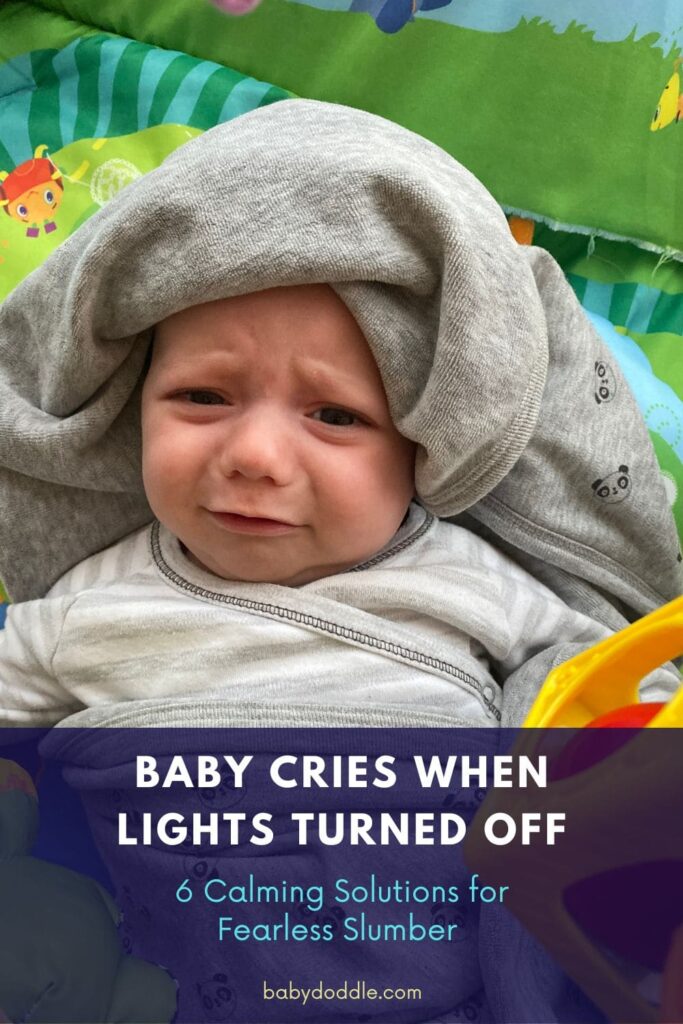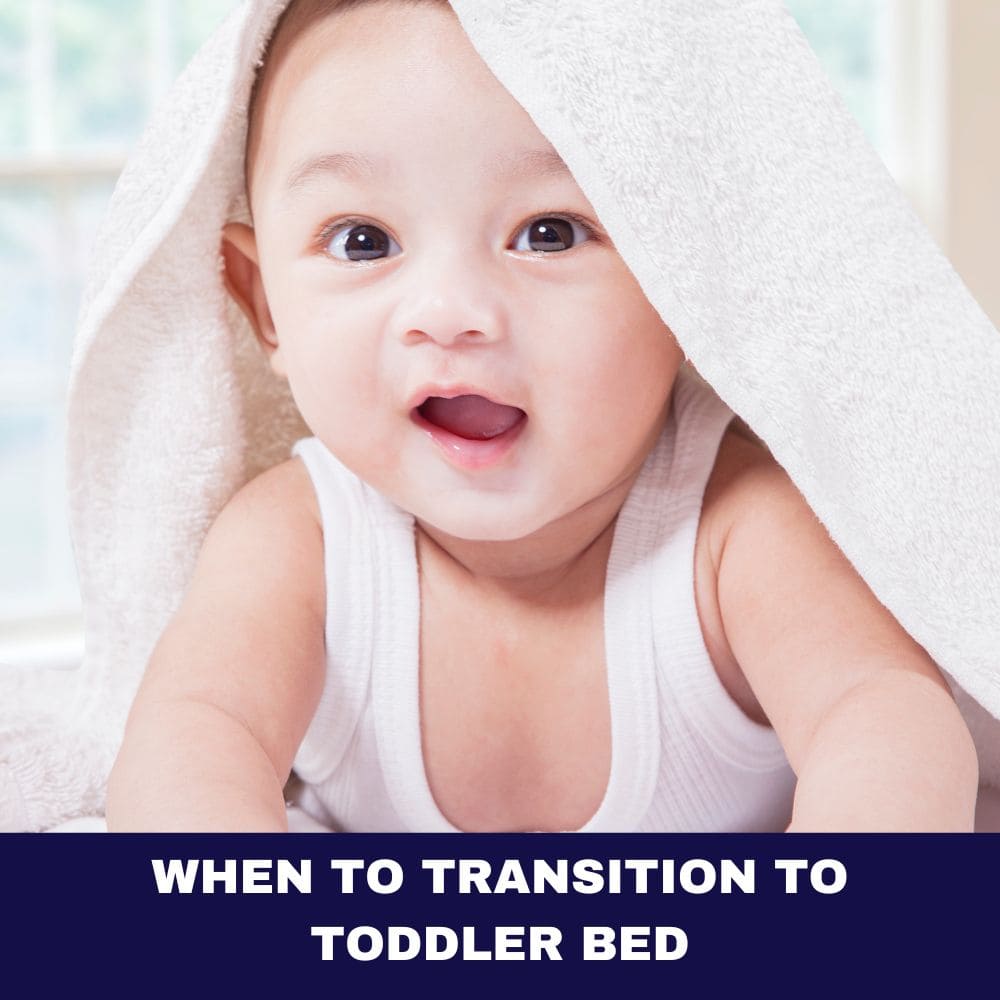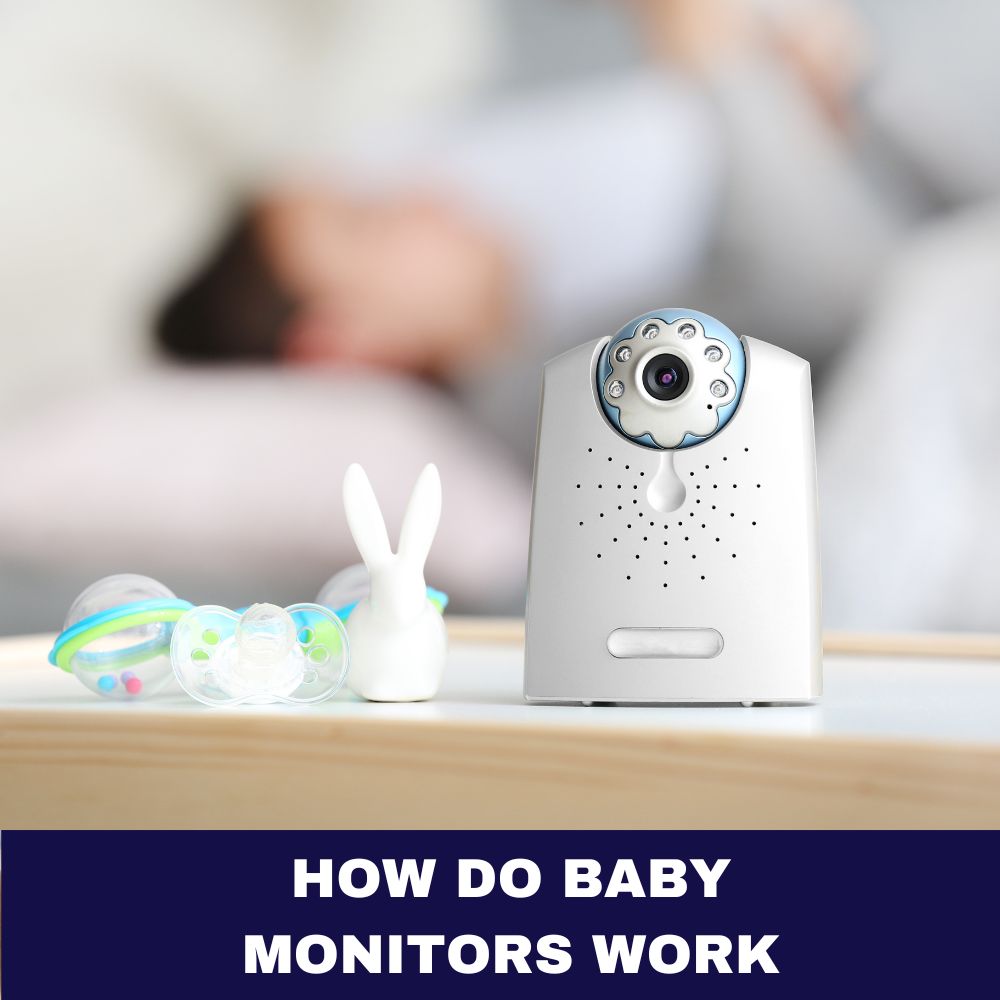As a parent, hearing your baby cry can be heartbreaking. But when their cries persist every time you try to turn the lights off at bedtime, it becomes more than just sad – it’s exhausting! The piercing wails when you flip that switch means disrupted sleep for everyone.
Trust me, I’ve been there. When my daughter was around 6 months old, bedtime became a battle of wills. The minute the lights went out, the waterworks started. She would scream and cling to me, refusing to settle down in her crib. My husband and I were at a total loss, running on empty from the perpetual sleep deprivation.
After many tearful nights (for both parent and child!), we finally discovered some techniques to help our little one relax in the dark and drift off to dreamland without all the drama. Now, bedtime is actually something we look forward to in our home.
If your baby cries when lights turned off, know that you’re not alone. And it is possible to have a smooth, tear-free bedtime routine. In this post, I’ll share what I learned about the common causes behind this behavior, along with pro tips to help your child overcome their fear of the dark so you can both get some much-needed rest.
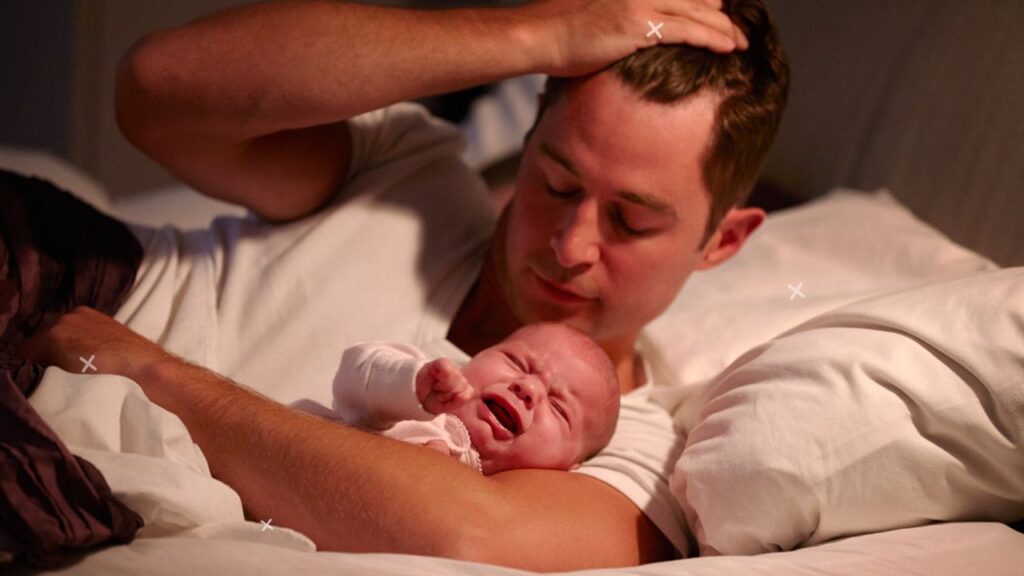
What Does It Mean When A Baby Cries When Lights Turned Off?
When a young baby suddenly starts wailing as soon as the lights go out, it can be baffling and frustrating for sleep-deprived parents. But what causes this after-dark meltdown? There are a few common explanations:
They’re used to sleeping with lights on. Some babies are just conditioned to snoozing with a bright room. So when you suddenly take away the light, it’s unfamiliar and scary. This often happens if parents have not been putting the baby to bed in a dark room consistently.
Fear of the dark. Between 4-12 months, separation anxiety and imagination both kick into high gear. Your little one becomes scared of being away from you and visualizing frightening things in the dark. This fear manifests in crying when the lights go off.
General overtiredness. Darkness can be an added trigger for an already exhausted baby to release their crankiness. Crying when lights out happens may simply mean they’re overtired and the sudden change pushes them over the edge.
Discomfort or hunger. Sometimes baby’s cries signal physical distress like gas pains, eczema or hunger rather than fear. If you’ve ruled out other causes, check for wet diapers, and skin irritation or try a pre-bedtime snack.
While each child is unique, pinpointing what initially prompts the dark-time meltdowns gives you important clues on how to prevent them.
Common Ages When Babies Develop Fear of the Dark
Though all children progress at different paces, there are certain age ranges when fear of the dark commonly emerges:
- 4-6 months – Around this time, babies gain more awareness of their surroundings. They begin understanding object permanence (things exist even when unseen) but still struggle with it. The concept of “out of sight, out of mind” is frightening.
- 6-12 months – Separation anxiety peaks. Your little one now understands you’re a separate being, and it’s distressing when you leave. Darkness compounds this as they can’t see you anymore. Stranger anxiety and imagined fears also start forming.
- 2-3 years old – Nighttime tantrums may resurface as your toddler’s imagination and dreams become more vivid. Darkness triggers new scary thoughts. Boundary testing around bedtime also comes into play now.
While it may feel like you’ve regressed, these phases are all a normal part of your child’s social-emotional development. The key is responding with empathy and consistency.
| Age Range | What’s Happening Developmentally |
|---|---|
| 4-6 months | Gaining awareness of surroundings, struggling with object permanence |
| 6-12 months | Separation anxiety peaks, stranger anxiety emerges, imagination developing |
| 2-3 years old | Vivid imaginary fears, boundary testing around bedtime |
Signs Your Baby Is Afraid of the Dark
How can you clearly identify if your baby’s bedtime meltdowns stem from a fear of the dark versus general fussiness? Here are some telltale signs to look for:
- They cry, scream or act panicked specifically when the lights go off. They may have been calm and peaceful before that moment.
- They frantically grab, cling or try to climb on you as the room goes dark.
- You notice them staring into the dark corners of the room or freezing up in fear.
- Prolonged crying that only subsides if a light is turned back on.
- Refusing to sleep unless a parent stays or a nightlight is left on.
- Resisting going in their crib or room as bedtime nears.
- Extra sweatiness or shakiness as darkness falls.
- Acting startled if they wake up in the dark or shadows.
If several of these cues sound familiar, darkness is most likely the root of bedtime battles.

Why Does Darkness Cause Such Distress?
To understand what’s provoking your baby’s dread of the dark, it helps to know what’s developing in their rapidly growing brains:
– Lack of object permanence – Babies can’t yet grasp that things still exist when out of sight. So when you vanish in the dark, to them, you’re gone forever.
– Hyperactive imagination – They begin picturing monsters under the bed or other horrors in the shadows. This hits hardest from 6-12 months as imagination ignites.
– Associating darkness with sleep – By this age, they connect lights out with the unknown world of sleep. Resisting bedtime transitions also comes into play.
– Trouble identifying sounds – Without visual cues, they struggle to interpret noises and easily misconstrue them as scary things creeping about.
– Immature reasoning skills – They don’t logically understand parents will return and that most noises have harmless explanations. Fear overrides logic.
Knowing these developmental factors are at play can prevent you from taking the crying personally. Have empathy for the very real panic your baby feels when the lights go out.
Potential Long-Term Effects If Fear Persists
In most cases, a child will naturally outgrow anxiety about the dark, especially with your help through implementing some of the following techniques. However, if left unaddressed, an ongoing intense fear can have several negative effects:
- Chronic sleep troubles that impact health and development.
- Emotional struggles like clinginess, temper tantrums or reduced self-confidence.
- Compulsive sleeping habits later in life like needing a TV on or requiring night lights.
- Associating bedtime with trauma leading to continued struggles falling asleep.
- Generalized anxiety manifests as exaggerated fear responses to shadows or dark rooms.
Again, it is very normal for babies to go through phases of fearing the dark. But if it remains an intense, prolonged issue past 3 years old, seeking advice from your pediatrician or child psychologist can be beneficial. They can assess if a child has underlying chronic anxiety requiring treatment.
The good news is – the earlier you implement interventions to help them, the less likely darkness will remain a long-term struggle. The following tips can make a huge difference in dissipating the after-dark panic.
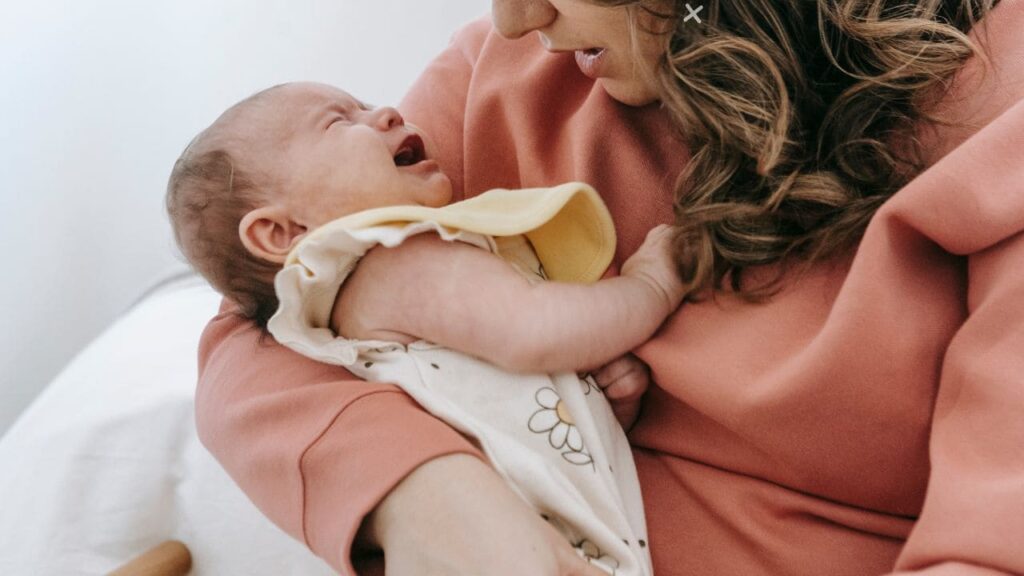
6 Ways to Calm Your Baby’s Fears and Encourage Restful Sleep
When your baby startles and cries the moment lights go out, it’s gut-wrenching as a parent. Sometimes our first instinct is to immediately turn the lights back on to soothe them. But while this stops the tears short-term, it actually reinforces the fear. With some simple adjustments though, you can ease their anxiety and help them drift off peacefully:
1. Gradual light dimming
Rather than abruptly shutting off lights at bedtime, install a dimmer switch or smart bulb so you can slowly dim. Gently transitioning from light to dark prevents a shocking plunge into blackness. Talk in a soothing voice explaining what you’re doing.
2. Noise machines or music
These provide just enough background noise so sudden sounds won’t startle them. The hum of a fan, white noise machine or lullaby songs also gives their brain something to focus on besides imagined noises.
3. Comfort items like stuffed animals or blankets
Double up on these! Having an extra fuzzy friend or blanket you’ve slept with can provide a tangible sense of your presence even when you leave. The familiar scents and textures essentially become an extension of you.
4. Quiet cuddling or patting
If your little one is still stirred up as darkness falls, some calming human touch helps override the fear. Hold them close or rub their back and remind them they’re okay. Just be sure to put them down still awake, not rocked fully asleep.
5. Establish pre-sleep routines
Following the same sequence of activities before bed every night – bath, PJs, story, song, etc – helps babies anticipate what comes next. Routines build trust that sleep will follow even in the now dim room.
6. Use nightlights or colored bulbs
For children scared of full darkness, compromise with a very dim nightlight. Or swap out bright bulbs for softer color bulbs. Just enough light to make out their surroundings but still dark enough for sleep.
With time and consistency using these gentle interventions, your child will become progressively accustomed to the nighttime darkness. Check out [ inserts online course name] for step-by-step plans tailored to your child’s needs.
When Should You Seek Out Professional Help?
While it’s developmentally normal for babies around 6-12 months to resist the dark, extreme nighttime anxiety or crying past 24 months may signal an issue requiring medical guidance. Consult your pediatrician if:
- Your toddler remains terrified and impossible to console in the dark despite your interventions. Looking for monsters, panicking, and intense crying that lasts over an hour.
- Darkness continues severely disrupting sleep for more than 30 minutes at bedtime and multiple night wakings.
- You notice signs of chronic anxiety during the day as well like separation tantrums, refusing to sleep alone, or avoiding dark rooms.
- There are major sleep regressions or suddenly increased crying during the night after prior progress.
- Your own mental health is suffering from prolonged sleep deprivation related to their fears.
Sleep specialists, child psychologists, occupational therapists or vision exams may be warranted if your little one’s nighttime distress remains beyond the typical developmental window. An outside expert can uncover if sensory issues, behavioral disorders or vision problems might be exacerbating the fear of darkness.
With professional guidance and consistency at home, even severe childhood phobias of the dark can be overcome. The key is intervening early before the anxiety becomes ingrained.
Teaching Older Babies to Self-Soothe in the Dark
Once your infant or toddler has developed some language skills, usually around a year old, you can start actively coaching them to self-calm when the lights go off. Here are some baby steps:
Books – Read stories about characters who have nighttime fears but learn to soothe themselves, like “Goodnight Moon.”
Daytime practice – Play “lights out” for brief moments during the day. Praise them for bravery and remind them lights always come back on.
Verbal reassurance – Have a little mantra you repeat like “Mommy’s here. You’re alright.” Teach them to say it when scared.
Sit nearby – Stay close but don’t hold them. Your presence reassures without reinforcing physical dependence.
Exposure therapy – For resistant toddlers, practice spending incremental time in dark rooms, even starting with just seconds.
Confidence building – Remind them they can snuggle a lovey or sing to themselves like you do. They have the tools to face darkness.
With your patient guidance, your little one will gain the courage to flip the “dark switch” in their mind instead of flipping out.
| Step | Example |
|---|---|
| 1 | Sit with child in lit room, turn lights off for 1 second, praise |
| 2 | Over days/weeks, increase dark time to 5 secs, 10 secs, building up |
| 3 | Sit in dim room, turn lights off for brief periods |
| 4 | Move to fully dark room as previous steps succeed |
| 5 | Practice lying in bed in the dark while parent sits nearby |
| 6 | Parent leaves room for very short intervals then returns |
| 7 | Increase alone time in dark as child’s skills improve |
Creating an Ideal Sleep Environment
While behavioral techniques form the core of helping baby sleep in the dark, optimizing the physical sleep space can provide added comfort:
- Ensure the room is pitch black with blackout curtains. Any shadows or streetlights can trigger unease.
- Choose lighting that can gradually dim – smart bulbs, dimmers, and remote control lights.
- Mitigate startling noises with white noise, rugs on hard floors or sealing windows.
- Make sure the room temperature is cool and comfortable. Too hot and the baby becomes restless.
- Select soft, cozy bedding and PJs that feel soothing to your baby’s skin.
- If you transition them to a big kid bed, opt for rails to prevent falling which would be alarming.
- Position the crib/bed so your baby isn’t facing something scary, like a dark, open closet.
- Put favorite blanket or stuffed animal within reach for instant comfort.
Remember, don’t force these changes overnight. Implementing gradually is key for sensitive babies. With time, the new normal will become lights out = sleep time versus panic time!
The shift towards happy bedtimes free of crying when the lights go off may feel laborious. But take it from me, every ounce of effort is worth those peaceful moments each night as your baby slips into slumber without any tears or screams. When the lights switch off in our homes these days, rather than being met with shrieks, we’re greeted with silence. Just the faint sound of sleep-breathing drifting through the monitor as we gaze at that blessed baby monitor glow – two eyes blissfully shut.
There is light ahead, I promise (pun intended)! With the techniques we just covered, your child’s fear of the dark will soon illuminate into an easy bedtime. Sweet dreams!
FAQ – Baby Cries When Lights Turned Off
Why does my baby instantly start crying when I turn the lights off for bedtime?
This reaction is common in babies 6-12 months old as separation anxiety and fear of the dark emerge. They feel scared when the lights go out and can no longer see you there. Other causes can be hunger, overtiredness or discomfort.
What’s the ideal bedtime routine for a baby scared of the dark?
Establish a consistent sequence like bath, pajamas, stories and feeding before lights out. Dim the lights gradually vs all at once. Use white noise, stuffed animals, and touch/verbal reassurance to ease the transition to darkness.
How do I know if my baby’s fear of the dark is just temporary or a bigger issue?
Brief phases of fearing the dark around 6-12 months are normal. But if intense crying, clinging, or refusing to sleep alone persists past 2 years old, consult your pediatrician about anxiety.
Is it okay to leave a nightlight on for my 1 year old who is scared of the dark?
For young toddlers, using a very dim, soft nightlight can be an effective compromise. Just ensure it won’t disrupt their sleep. Slowly phase it out by 12-18 months as their fear dissipates.
How can I teach my toddler strategies to self-soothe when afraid of the dark?
Around 12 months old, use books, verbal reassurance and praise to encourage them to use a lovey or sing to themselves when lights go out. Build their confidence and self-calming skills over time.
